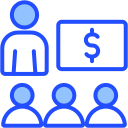Chosen theme: Certified Financial Planner (CFP) Programs. Step confidently into a profession built on expertise, ethics, and real-world impact. Explore how CFP programs shape strategic thinkers, empathetic advisors, and lifelong learners. Subscribe for weekly insights, tools, and stories that bring the CFP journey to life.
What a CFP Program Really Covers
The CFP Mark and Its Promise
The CFP certification signals a commitment to competence and care. Programs emphasize comprehensive planning, from cash flow to estates, while training you to listen closely, challenge assumptions, and translate data into decisions clients can actually follow.
Education + Exam + Experience + Ethics
CFP programs align with a four-part standard: formal education, a comprehensive exam, professional experience, and a binding code of ethics. Together, these elements ensure knowledge is matched with judgment, accountability, and client-first duty.
How Programs Prepare You for Real Clients
Expect case studies, scenario analysis, and capstone projects that mimic real decisions people face. You learn to prioritize goals, handle trade-offs, and present plans with clarity, empathy, and confidence that invites client trust and follow-through.

Retirement Income Planning
Learn to map savings strategies to real timelines, design withdrawal policies, and stress-test income under market volatility. Programs teach you to balance longevity risk, taxes, and lifestyle goals, turning uncertainty into adaptable, evidence-based retirement plans.

Investments and Portfolio Construction
From asset allocation to behavioral finance, you learn frameworks for building diversified portfolios that reflect risk capacity and risk tolerance. Scenario work shows how rebalancing, costs, and discipline shape outcomes across market cycles and client emotions.
Complete a CFP Board–registered program or meet requirements through approved coursework and credentials. Advisors with prior academic or professional depth can often satisfy prerequisites strategically, minimizing redundancy while maintaining the rigor the designation demands.
Paths to Eligibility
Programs highlight how to log qualifying experience through client-facing roles, financial planning support, or supervised apprenticeships. You’ll learn to document responsibilities clearly, align duties with competencies, and convert day-to-day work into verified progress toward certification.
Paths to Eligibility
Ethics and the Fiduciary Standard
You’ll learn to align recommendations with client goals, constraints, and values, not sales targets. Transparent disclosures, plain-language explanations, and documented reasoning create trust that compounds over time, just like a well-constructed portfolio should.
Ethics and the Fiduciary Standard
Programs coach you to spot conflicts early, disclose clearly, and design processes that minimize bias. Through realistic cases, you practice saying no when a recommendation isn’t right—even when it’s harder in the short term.


Careers After Certification
From associate planner to lead advisor, private wealth strategist, or financial coach, CFP training equips you to translate complex analysis into practical guidance. Firms value that blend of technical precision and human-centered communication.

